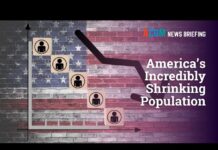 Anika Khurana
Anika Khurana
The Coronavirus pandemic, or COVID-19, has revolutionized the educational system and its delivery to students across the world. The airborne disease transmits deadly droplets through close contact between people.
Consequently, social distancing has been enforced by governments across the world, leading to school shutdowns and an immediate switch to online education. Although online learning is not a novel concept, the virus acted as a catalyst, forcing learners and educators to adopt distance learning.
Almost overnight, the education systems scrambled to transition completely to online distance learning with little time to plan and no clarity of what will happen next. Teachers and students who are used to interactive courses have begun to revise the curriculum and their learning methods to adapt to the new remote conditions. The spiraling crisis has overwhelmed every aspect of the teaching world.
I am a junior at Irvington High School in Fremont, CA and am sharing some excerpts from my research paper written on the effects of the Coronavirus pandemic on student learning. I’ve never had to write my college essay on topics like this. This paper compares traditional and online learning and the effects they have on social interactions, motivation, and stress on students.
In comparison to traditional learning, distance learning does not provide the needed discipline for successful and efficient learning. Through traditional learning, an educator can easily identify a student’s attentiveness and assess their teaching methods to ensure constant growth in a learner’s progress. In remote learning, however, it is difficult to keep an eye on a large number of students in a class on a screen.
There are a multitude of distractions, interrupting the class flow and creating challenges to teach. Distance learning does not allow for the same student-teacher and student-student relationships as it was in the classroom environment.
Attending remote classes in isolation confines students to their homes, keeping them from important social interactions that encourage learning. The absence of hands-on experiences such as field trips, lab work, and group assignments, are missed by students negatively impacting their learning and growth. A nod in the hallway, a wave in the cafeteria, or a smile in the locker room are a few examples of social gestures that help a student cope with stress. Social interactions appropriately address pressure and provide motivation to students, which is not accessible though remote education.
The COVID-19 continues to reveal new layers of inequity within societies. Although every learner has been negatively affected by this sudden adjustment to remote learning, certain populations of students have been particularly affected by the transition to remote learning. Young children, for example, are faced with the disadvantage of being technologically illiterate, requiring additional assistance. Learners with learning disabilities are also an example of an affected population deprived of the proper help needed to continue a successful education. There have been additional challenges of online learning affecting underprivileged students from lower socioeconomic societies.
The education system proved itself to be unprepared in the spring, creating educational gaps, as students were no longer graded on attendance. There are measures that can be taken to better improve upon the current conditions of education and bridge the gaps of education students have missed. For instance, it is important to make adjustments to ensure equal resources and access to all learners.
Additional funding from the government can be provided for schools to be more resilient and be able to offer electronic materials such as laptops and hotspots to all students who do not have access to these materials. Public libraries can open with appropriate safety precautions to accommodate for a conducive setting for learners to be able to access a designated space to facilitate their learning.
Educators can grant office hours to students with special needs or highly stimulus households for any additional help or support they may need. The potential solutions to this ongoing educational crisis will require more funding, new policies, innovative lesson plans, new etiquettes, new attitudes, and much more, in which the communities and government have a crucial role to play.
As the media covers one of the most controversial debates, regarding the opening of in-person schools it is important to remember the decision to re-open schools should not be driven by the pressure of politics but the evidence of science.







